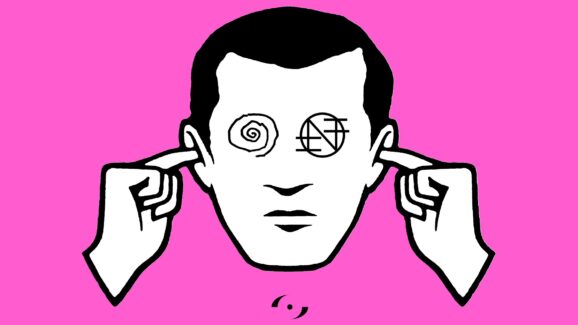Spring ’90 is synonymous with many things to many people, but in the Grateful Dead world, it was perhaps one of the most vital tours in the beloved band’s history: everything was clickin’. Glide is continuing to revisit Grateful Dead’s Spring ’90 tour in honor of its 30th anniversary, with recaps and video highlights and we now on the final run of the tour- Atlanta’s Omni. Without further ado….
April 2, 1990 – The Omni, Atlanta, GA:
With only two shows remaining on their Spring calendars, the Dead were still showing almost no signs of slowing down, delivering a pair of well-played sets to the Atlanta faithful. While this penultimate concert arguably may not rank among the strongest performances of the tour, it still features several standout moments, highlighted by an emotionally charged second-set rendition of Reverend Gary Davis’s “Death Don’t Have No Mercy.”
After a raucous “Feel Like a Stranger” opened things up, Garcia then leads the band through another remarkably strong “Mississippi Half-Step” – this version features a somewhat extended reading of the final “Across the lazy river” coda – before a seamless transition into The Band’s chestnut “The Weight”, which had made its Grateful Dead debut just a few days prior in Nassau. Another cover, Bob Dylan’s enigmatic “Queen Jane Approximately”, was up next before a trio of originals – “Easy to Love You”, “Brown-Eyed Women”, and “Let it Grow” – closed the opening frame.
A further triumvirate of original songs opened the second set, with solid versions of “Foolish Heart”, “Looks Like Rain”, and “He’s Gone” preceding the Stones’ rocker “The Last Time”, which had laso recently made its Grateful Dead concert debut earlier that year. A typically psychedelic adventure through “Space” gives way to an equally mind-bending “The Other One” before the aforementioned “Death Don’t…” A rollicking pair of Weir cover songs – Chuck Berry’s “Around & Around” and the Rudy Clark/Arthur Resnick hit “Good Lovin’” – close the set, with a tender performance of the Garcia/Hunter ballad “Black Muddy River” filling the encore slot.
“Feel Like a Stranger”: This funky Bob Weir/John Barlow romp was played just over 200 times after making its concert and album (Go to Heaven) debuts in 1980. This song was somewhat self-referential for so many Deadheads who, at one point or another, have been wrongfully judged due to their genuine passion for an oft-misunderstood band. Tonight’s version is a fine example of a typically energetic Brent Mydland-era performance, with Garcia’s Mutron-saturated guitar lines weaving underneath Weir’s commanding vocals and Brent’s “long, long, crazy, crazy nights.”
“The Last Time”: Recorded by The Rolling Stones at Hollywood’s RCA Studios in 1965, this catchy track was the first UK single to be written by Mick Jagger & Keith Richards and was ultimately released on Out of Our Heads the same year. The Dead’s February 1990 debut of this number was immediately followed by rampant rumors and speculation among Deadheads regarding their imminent demise. Thankfully those worries were unfounded as the band went on to perform “The Last Time” nearly 25 times before abruptly dropping it from their repertoire in 1992.
“Death Don’t Have No Mercy”: Among the darkest of the Dead’s material, this bluesy acknowledgement of the Grim Reaper’s awesome and unbiased power made its concert debut in 1966 and appeared 45 times through 1970 with Garcia singing lead. After being all but forgotten for nearly 19 years, the band surprisingly busted it out during the 1989 Fall Tour for a handful of appearances, this time with Garcia, Weir & Mydland sharing vocal duties. Tonight’s emotional reading would ultimately mark the final Grateful Dead performance of this song.
“Black Muddy River”: This gospel tinged ballad, beautifully recorded on In The Dark, was played just under 70 times after its 1986 debut, despite an almost four-year performance gap between 1991-1995. Robert Hunter discussed the lyrics, among some of his finest late-era work, in a 1988 interview with David Gans: “I hesitate to define it for you-I could talk about what I mean by ‘black muddy river,’ and I don’t mean a literal river running around. It’s a deeply meaningful symbol to me, and I think just a little thought into, like, archetypal subconscious resonances gives you all you need to know about what we’re talking about here. And past that you’re setting it in concrete, and just as soon as that’s done, that’s not what it meant at all.”
Previous Spring ’90 Tour Revisits








